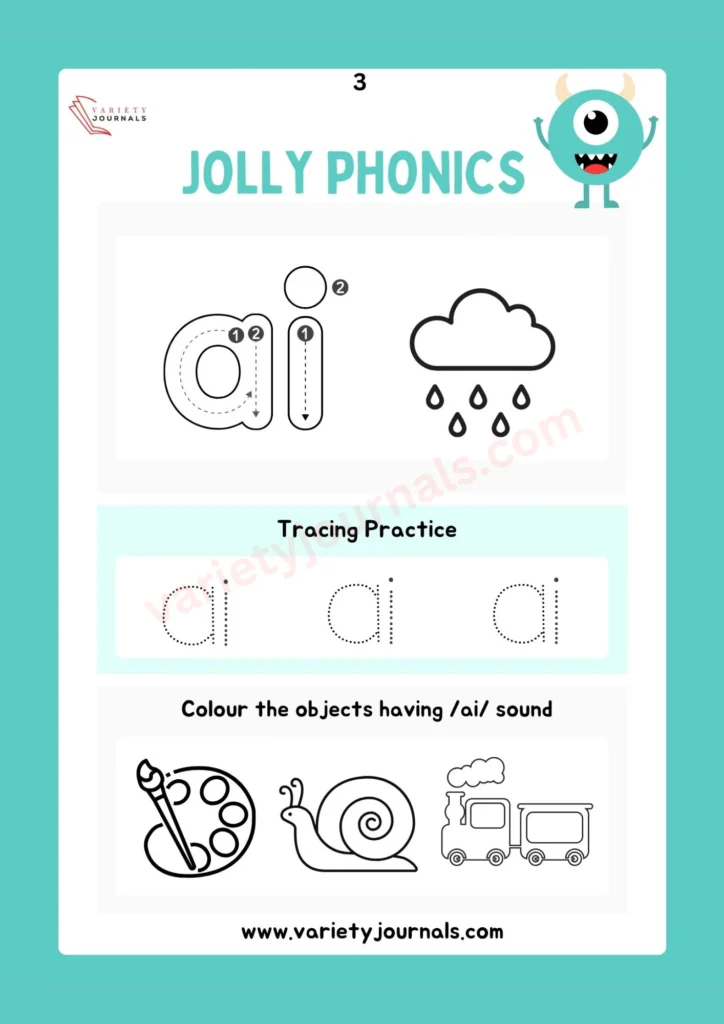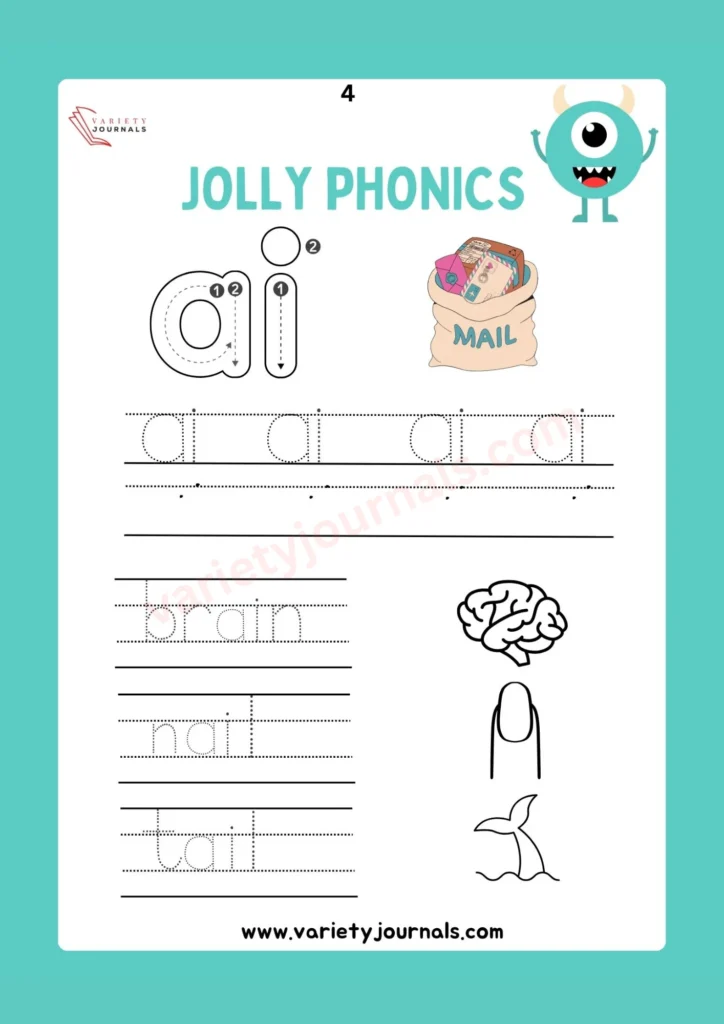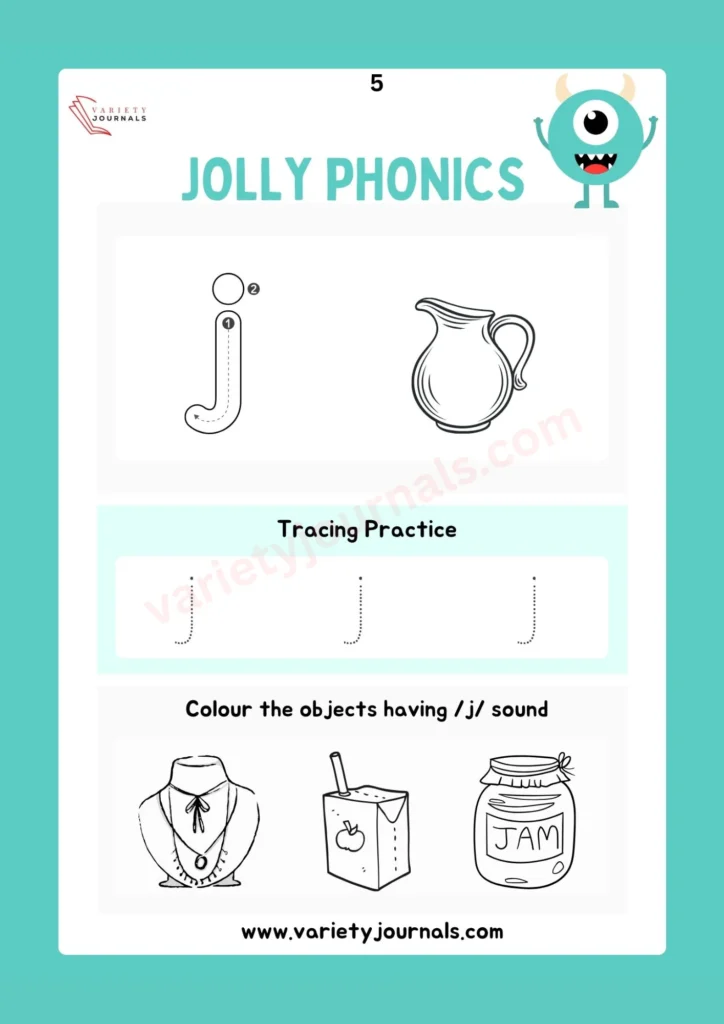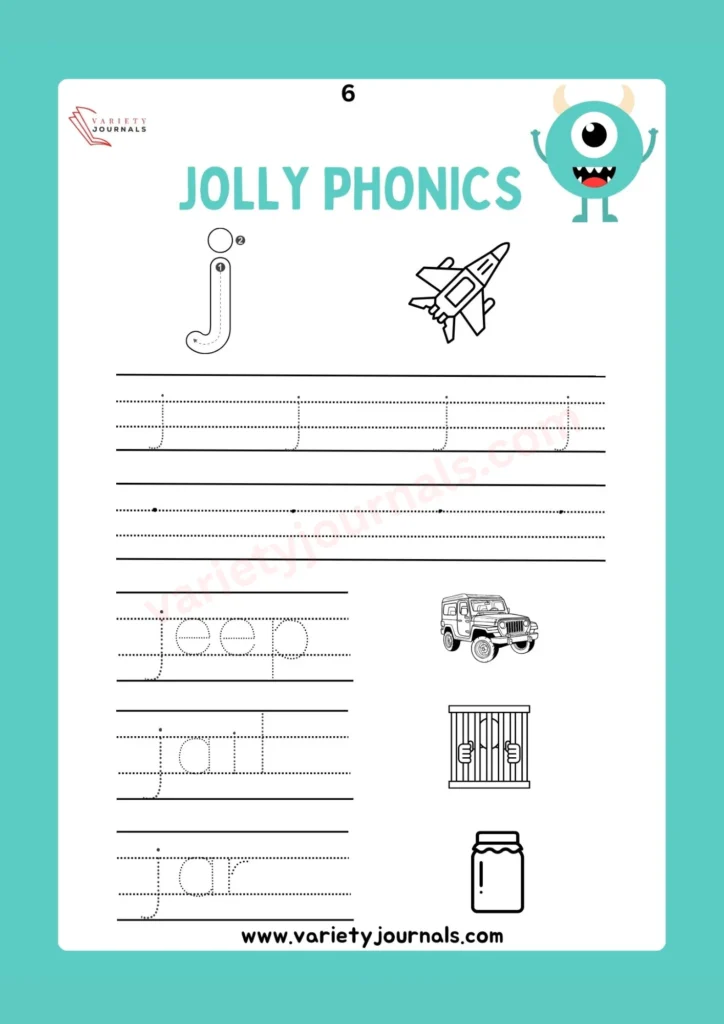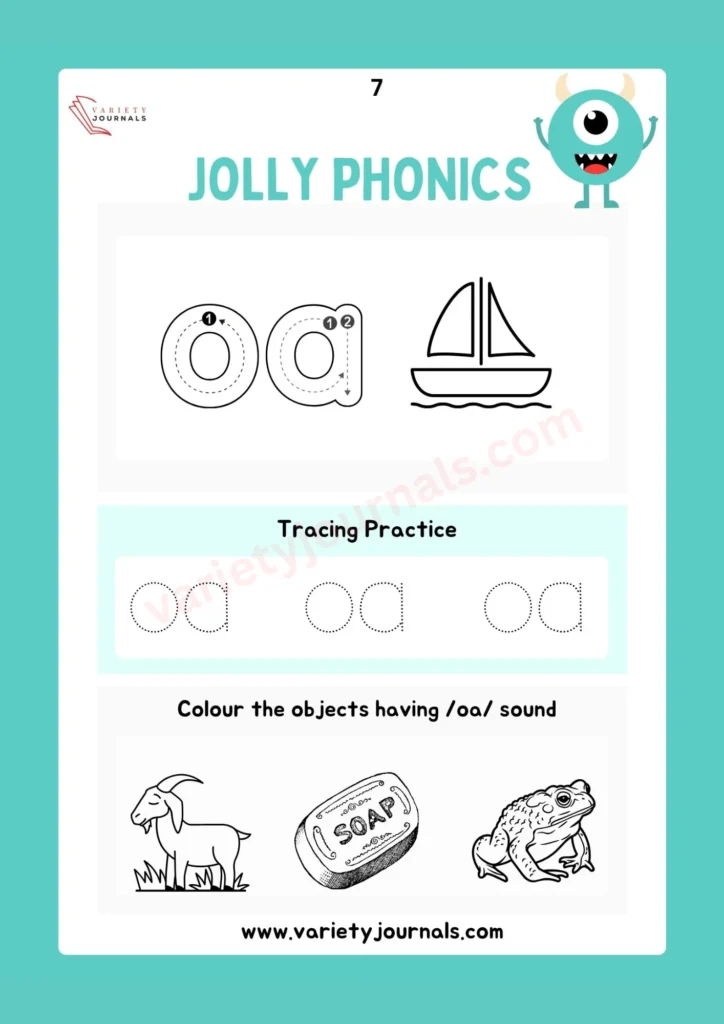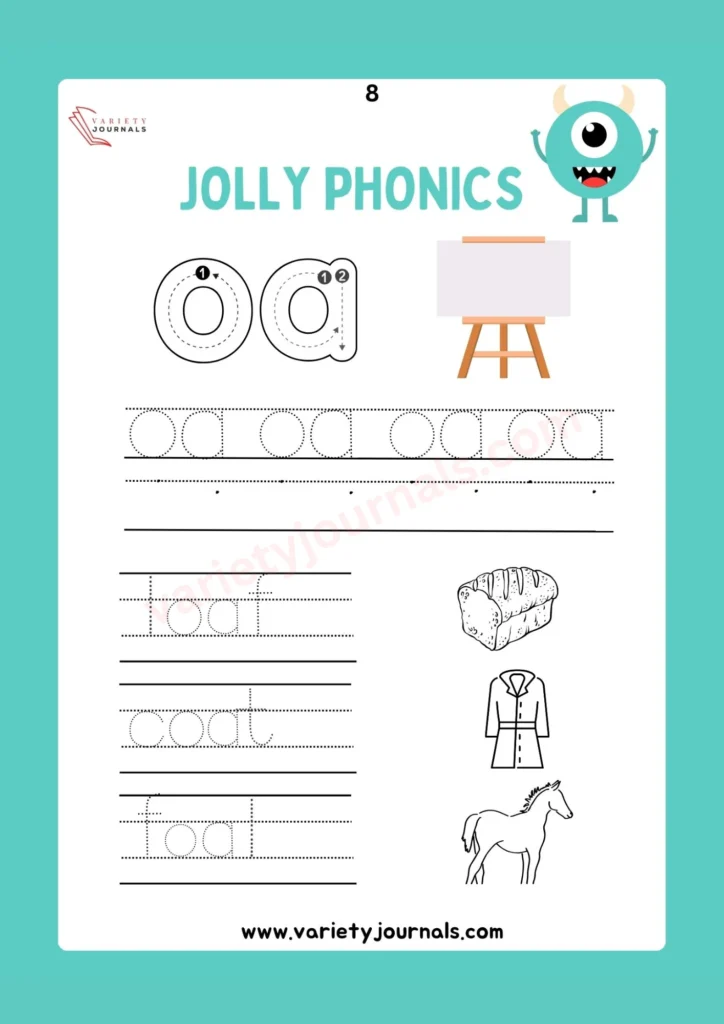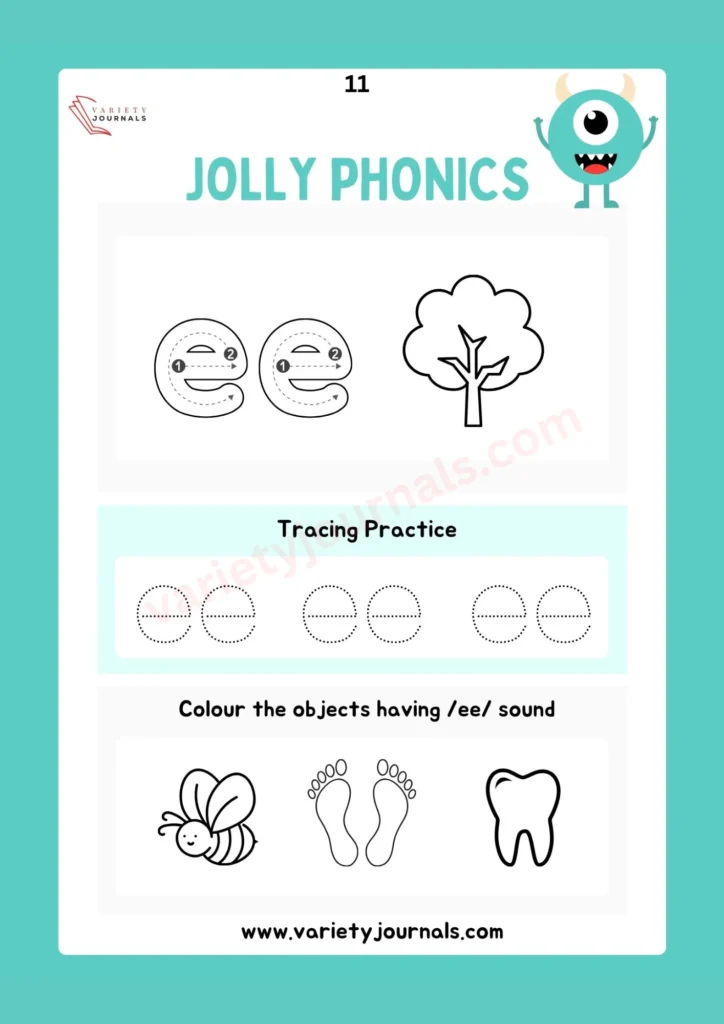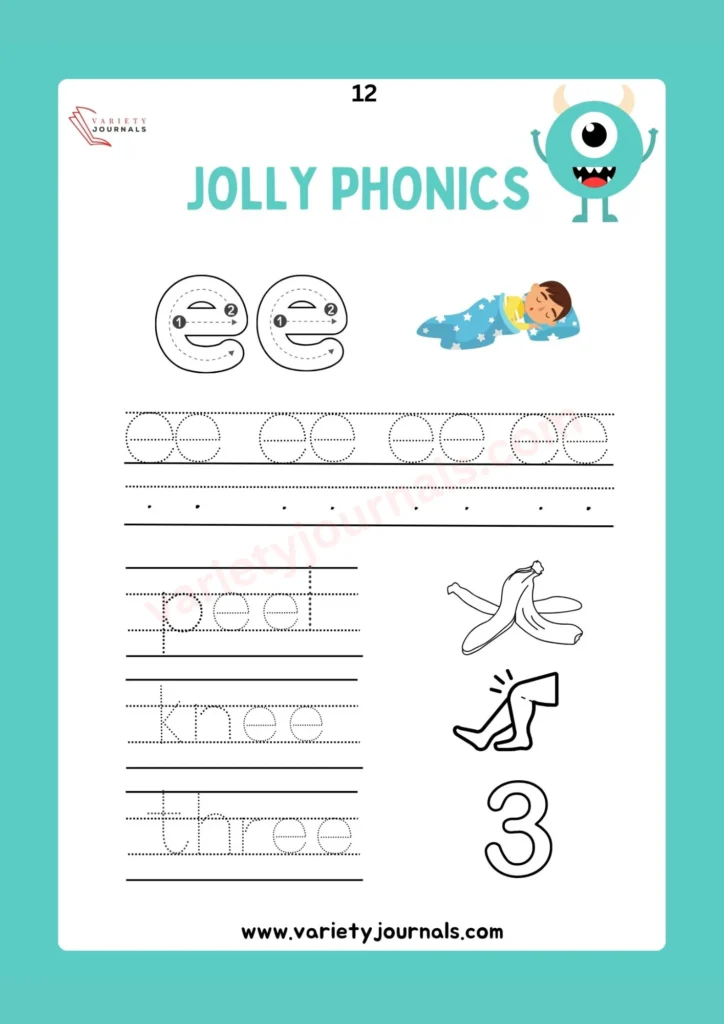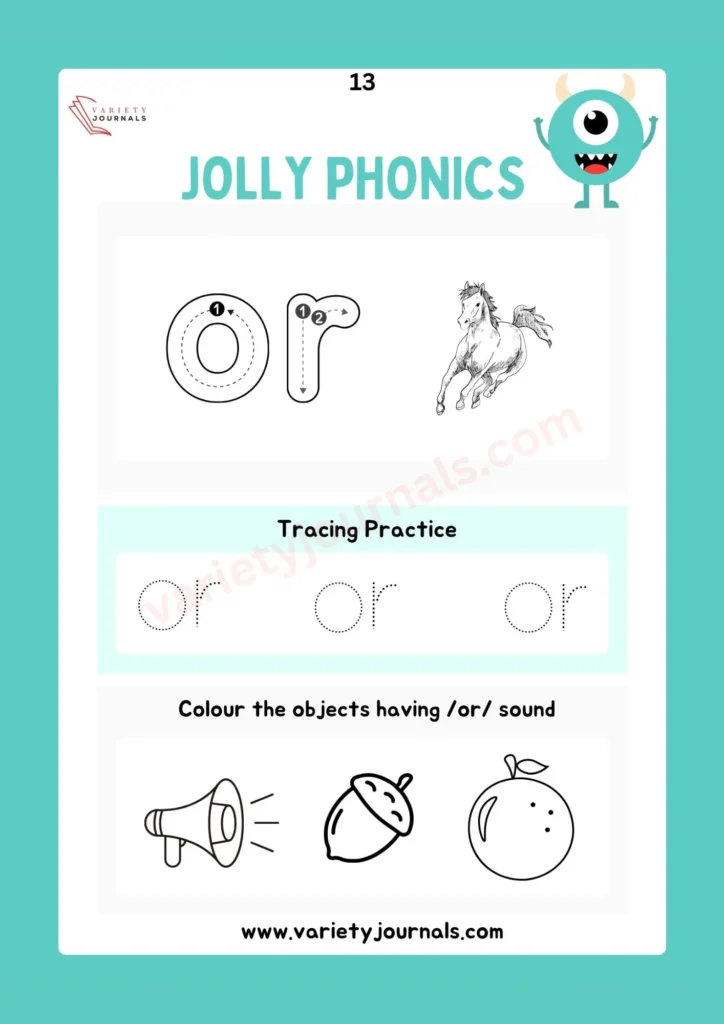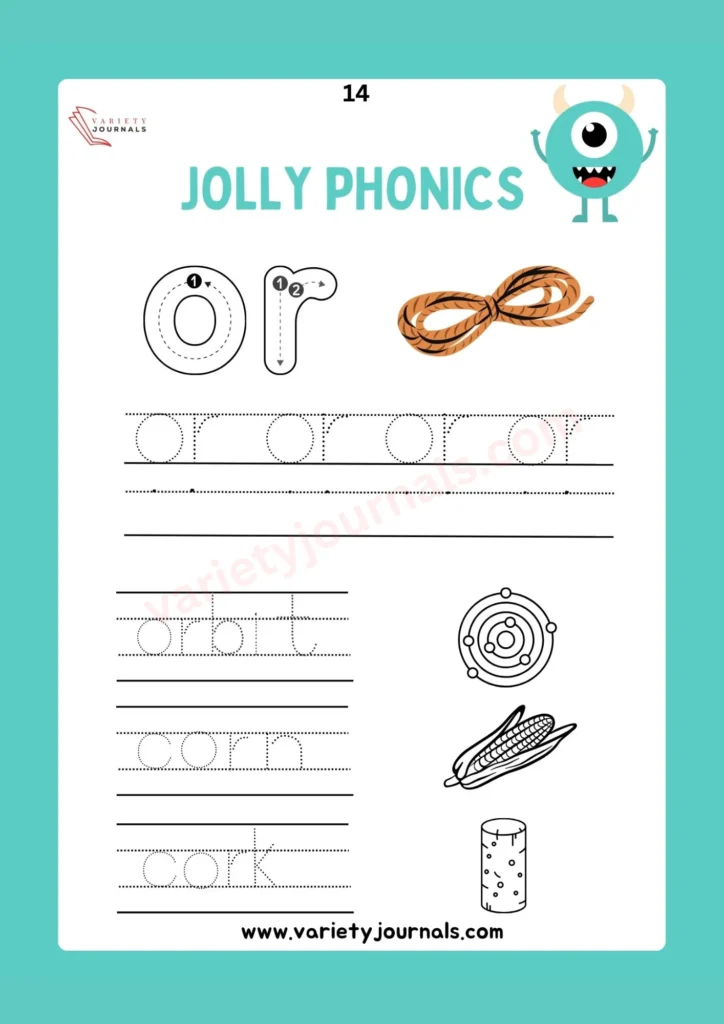Visited 4,824 times, 2 visit(s) today
Jolly Phonics Group 4 Worksheets
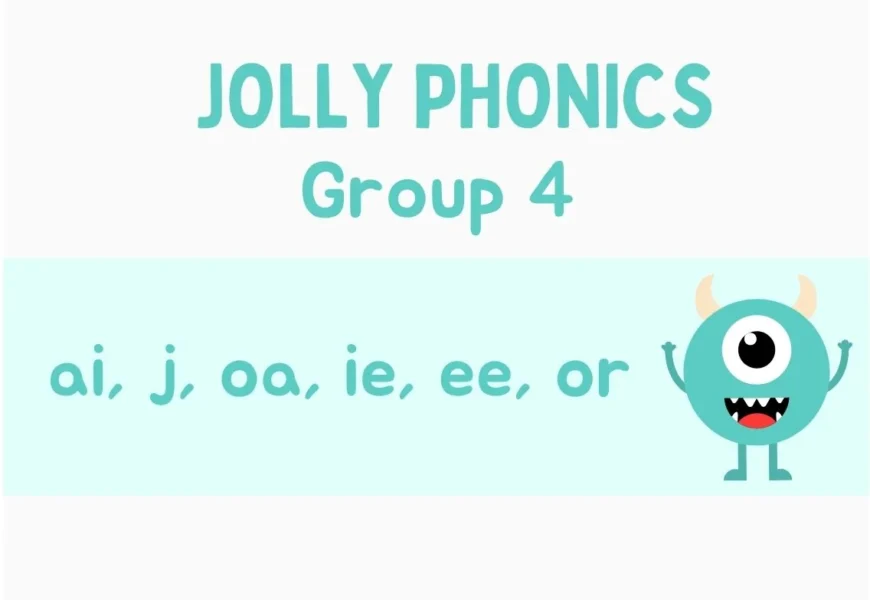

Jolly Phonics Group 4 focuses on the introduction of six new phonemes: “ai,” “j,” “oa,” “ie,” “ee,” and “or.” Here’s a detailed description of how these sounds are taught in Jolly Phonics Group 4.
In Jolly Phonics Group 4, children continue to learn the sounds (phonemes) of the letters, not their names. They are introduced to a new set of phonemes, namely, “ai,” “j,” “oa,” “ie,” “ee,” and “or.” Each of these sounds represents a specific letter or letter combination.
The order of sound introduction in Jolly Phonics Group 4 is designed to build upon the foundational knowledge acquired in previous groups. The introduction of these sounds follows the principles of synthetic phonics, prioritizing the most common and useful phonemes to facilitate the reading and spelling of more complex words.
Each new sound is introduced individually. For “ai,” emphasize the blending of the sounds /a/ and /i/ and discuss how it’s often found in words like “rain” and “sail.” For “j,” demonstrate the soft /j/ sound by saying it clearly and enunciating it. For “oa,” point out the combination of /o/ and /a/ to create the /oa/ sound, found in words like “boat” and “coat.” For “ie,” show how the /i/ and /e/ sounds combine to create the /ie/ sound in words like “pie” and “tie.” For “ee,” emphasize the long /e/ sound, often found in words like “tree” and “bee.” For “or,” discuss the /o/ and /r/ combination creating the /or/ sound, as seen in words like “fork” and “corn.”
Jolly Phonics often utilizes actions or visual cues to assist children in remembering the sounds. For “ai,” you can make a gesture of rain falling with your fingers. For “j,” you can mimic the motion of a jelly wobbling. For “oa,” you can use a gesture that resembles rowing a boat. For “ie,” create a smiley face with your fingers while explaining the sound. For “ee,” demonstrate the long /e/ sound by extending your arm like the letter ‘E.’ For “or,” use a gesture that imitates the act of opening a door.
Provide words that contain these new sounds, such as “rain,” “jump,” “boat,” “pie,” “tree,” and “fork.” Encourage students to identify and recognize these sounds within the context of words.
Engage students in reading and writing exercises using words containing these sounds. Encourage them to practice writing words and sentences that incorporate “ai,” “j,” “oa,” “ie,” “ee,” and “or.”
Incorporate interactive games and activities that reinforce the newly introduced sounds, such as word bingo, matching games, or word hunts.
Our specially designed worksheets are tailored to enhance the learning experience for “ai,” “j,” “oa,” “ie,” “ee,” and “or” sounds in Jolly Phonics Group 4. These worksheets provide a structured, hands-on approach to learning these phonemes, offering opportunities for students to practice recognizing, reading, and writing words containing these sounds. Through tracing exercises, students further develop their fine motor skills while reinforcing their understanding of letter formation. The colorful and engaging design of the worksheets promotes active participation, making learning enjoyable.
Moreover, our worksheets serve as a valuable resource for educators and parents, supporting young learners in building strong phonetic and early literacy skills. By incorporating these worksheets into the learning process, students can solidify their grasp of “ai,” “j,” “oa,” “ie,” “ee,” and “or” sounds, enhancing their reading and writing proficiency. These resources offer an interactive and enjoyable means for children to become confident and proficient readers and writers.
